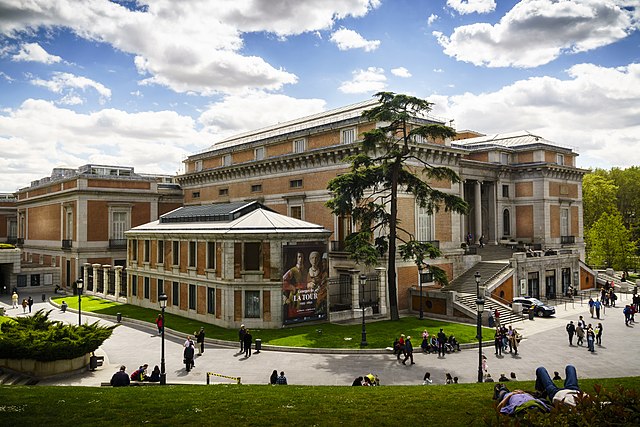Joaquín Sorolla y Bastida was a Spanish painter. Sorolla excelled in the painting of portraits, landscapes, and monumental works of social and historical themes. His most typical works are characterized by a dexterous representation of the people and landscape under the bright sunlight of Spain and sunlit water.
Platinum print of Sorolla by Gertrude Käsebier, c. 1908
The death of Pedro Velarde y Santillán during the defence of the Monteleon Artillery Barracks, 1884, Museo del Prado, Madrid
Sad Inheritance!, 1899. Crippled children bathing at the sea in Valencia; in the center the image of two children affected by polio (Bancaja Collection)
My Wife and Daughters in the Garden or "Mi Esposa e Hijas en el Jardín" which is the original name, 1910
The Museo del Prado, officially known as Museo Nacional del Prado, is the main Spanish national art museum, located in central Madrid. It houses collections of European art, dating from the 12th century to the early 20th century, based on the former Spanish royal collection, and the single best collection of Spanish art. Founded as a museum of paintings and sculpture in 1819, it also contains important collections of other types of works. The numerous works by Francisco Goya, the single most extensively represented artist, as well as by Hieronymus Bosch, El Greco, Peter Paul Rubens, Titian, and Diego Velázquez, are some of the highlights of the collection. Velázquez and his keen eye and sensibility were also responsible for bringing much of the museum's fine collection of Italian masters to Spain, now one of the largest outside of Italy.
Exterior of the Prado Museum
Museo del Prado (front façade)
In the main exhibition hall, first floor
Francisco Goya, La maja desnuda, oil on canvas, (c. 1797–1800)








